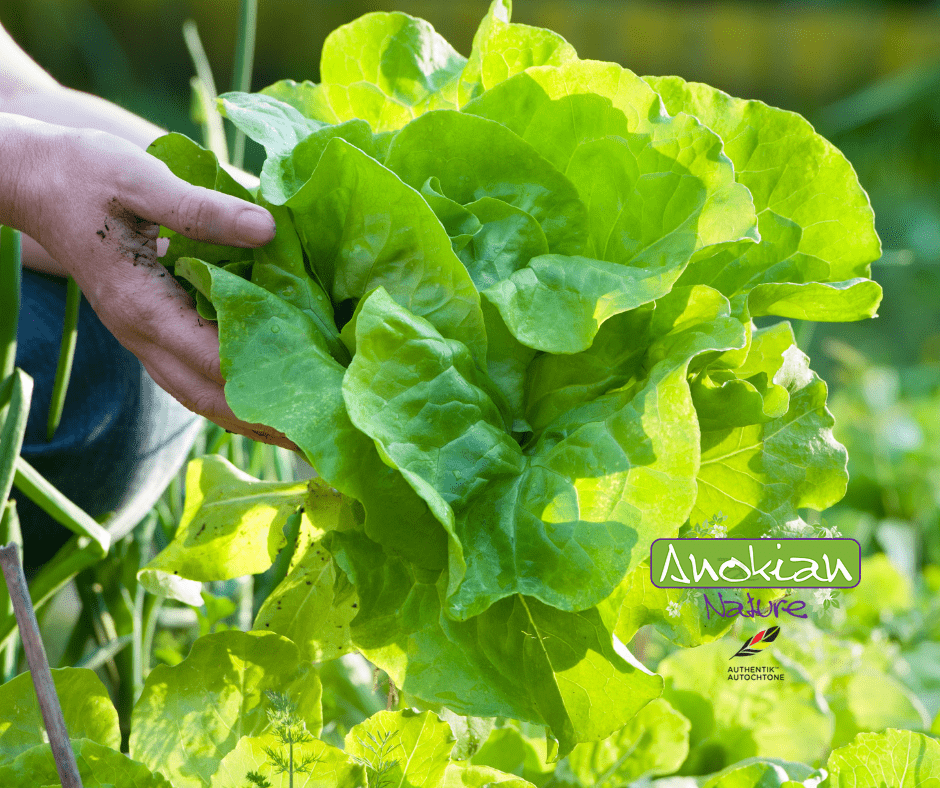Batavia lettuce, also known as Baquieu lettuce, is a versatile and delicious variety that lends itself to a variety of culinary preparations. Here are some recipes to showcase this crisp and flavorful lettuce:
- Crunchy Batavia Lettuce Salad
Ingredients :
1 head of Batavia lettuce
1 avocado, sliced
1 cucumber, sliced
1/2 red onion, chopped
1/4 cup pecans, lightly toasted
1/4 cup crumbled feta cheese
For the dressing:
3 tablespoons of olive oil
1 tablespoon of apple cider vinegar
1 teaspoon of honey
1 teaspoon of Dijon mustard
Salt and pepper to taste
Preparation :
Wash and dry the Batavia lettuce, then tear the leaves into pieces.
In a large salad bowl, combine the lettuce, avocado, cucumber, red onion, and pecans.
In a small bowl, whisk together the dressing ingredients until well blended.
Pour the dressing over the salad and toss gently.
Top with feta cheese before serving.
- Batavia Lettuce Wraps with Chicken
Ingredients :
1 head of Batavia lettuce
2 cooked chicken breasts, diced
1 red bell pepper, thinly sliced
1 carrot, grated
1/4 cup fresh cilantro, chopped
1/4 cup soy sauce
1 tablespoon of honey
1 tablespoon sesame oil
1 clove garlic, minced
Preparation :
In a small bowl, mix together the soy sauce, honey, sesame oil, and garlic.
Heat the chicken in a skillet over medium heat, add the prepared sauce and simmer until the chicken is well coated.
Wash and dry the Batavia lettuce leaves.
Arrange the lettuce leaves on a plate.
Fill each leaf with chicken, bell pepper, carrot and cilantro.
Wrap lettuce leaves around the toppings and serve as wraps.
- Creamy Batavia Lettuce Soup
Ingredients :
1 head of Batavia lettuce
1 potato, peeled and diced
1 onion, chopped
2 tablespoons of olive oil
4 cups vegetable broth
1/2 cup sour cream
Salt and pepper to taste
A few croutons for garnish (optional)
Preparation :
In a large saucepan, heat the olive oil over medium heat. Sauté the onion until translucent.
Add the potato and vegetable broth. Cook until the potato is tender, about 15 minutes.
Wash and cut the Batavia lettuce into pieces.
Add the lettuce to the pan and simmer for another 5 minutes.
Use an immersion blender to puree the soup until smooth. You can also transfer the soup in small portions to a blender for blending.
Stir in the crème fraîche and season with salt and pepper.
Serve warm, garnished with croutons if desired.
- Batavia Lettuce Taco Topping
Ingredients :
1 head of Batavia lettuce
1 cup ground meat (beef, chicken, or vegetarian alternative), cooked and seasoned
1/2 cup grilled corn
1/2 cup cherry tomatoes, halved
1/4 cup shredded cheddar cheese
1/4 cup salsa
Preparation :
Wash and dry the Batavia lettuce, then tear the leaves into pieces.
Arrange the lettuce leaves on a plate.
Top each sheet with the cooked ground beef, corn, cherry tomatoes and cheddar cheese.
Add a spoonful of salsa on top.
Serve these fillings on lettuce leaves as an alternative to traditional tacos, perfect for a light and fresh meal.
- Batavia Lettuce Gratin
Ingredients :
1 head of Batavia lettuce
1/2 cup heavy cream
1/2 cup milk
1/2 cup grated cheese (Gruyere, cheddar, or Parmesan)
2 tablespoons of butter
2 tablespoons of flour
1 clove garlic, minced
Salt and pepper to taste
Preparation :
Preheat the oven to 180°C (350°F).
Wash and cut the Batavia lettuce into pieces.
Melt the butter in a saucepan, add the garlic and sauté until fragrant.
Stir in the flour and cook, stirring, for about 1 minute to make a roux.
Gradually pour in the milk and cream while continuing to stir until the sauce thickens.
Add the grated cheese and season with salt and pepper.
Arrange the lettuce in a baking dish and pour the cheese sauce over it.
Bake for about 20 minutes, or until golden brown and bubbly.
Serve hot as a side dish.
These recipes showcase the versatility of Batavia lettuce and offer delicious ways to incorporate this vegetable into various dishes. Whether in a salad, wrap, soup, side dish, or casserole, Batavia lettuce adds a crisp, flavorful touch to your meals.









